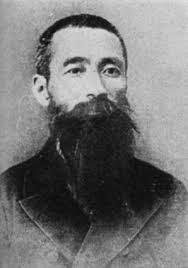Komai Shigetada was a samurai of Kuwana and a retainer of Matsudaira Tadanari. He went to Rutgers College in 1874. However, Komai returned to Japan before graduation. In returning to Japan, Komai founded the Senshu School along with Tajiri Inajiro, Soma Nagante, and Mekata Tanetoro with the support of Fukuzawa Yukichi. The Senshu School was an independent private school, and it was opened in 1880. The school offered courses in economics, finance, and law. These courses were all taught in Japanese. There was also an established Department of Political Economy. After two years of establishment, the school offered a three-year course with statistics, budgetary policy, government loans, and commercial history. Komai was also a lecturer at the school.
In 1899-1901, Komai served as the president of the Tokyo Higher Commercial School, which is now known as Hitotsubashi University. During his time in this role, he was known to have raised the standards of education by making education specialized. He was also a benefactor who was largely responsible for the school’s development.
Komai was also cited to be responsible for the translation of Western economic books. Some titles include John Elliot Cairnes’s The Character and Logical Method of Political Economy and Free Trade and Protection. After his return to Japan, Komai also entered the Finance Ministry, where he was responsible for the 500-page translation of Traité, a work of budgetary matter, that was later used as a reference in drafting the Meiji constitution.

Burks, A. W. (2019). Modernizers: overseas students, foreign employees,and Meiji japan. S.l.: ROUTLEDGE.Burks, A. W. (2019). Modernizers: overseas students, foreign employees,and Meiji japan. S.l.: ROUTLEDGE.
Checkland, O. (2015). Japan and Britain after 1859: creating cultural bridges. London: Routledge, Taylor & Francis Group.
Ericson, S. J. (2020). Financial stabilization in Meiji Japan. The impact of the Matsukata reform. Ithaca: Cornell University Press.